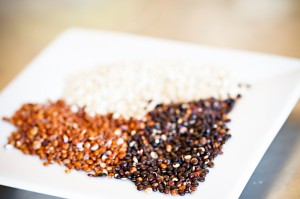The Next Chapter for Little City Kitchen: The Story of Five “Singles”
 Many of you read last week’s blog about the decision to stop baby food altogether and to not write the baby food cookbook that I had been considering. Through this process, I’ve realized that my own entrepreneurial path is extremely fluid. I tend to be one who likes some amount of consistency, so I work hard to embrace the changes and adapt quickly to them. Flexibility, I’m learning, is one of the most critical skills that an entrepreneur should master.
Many of you read last week’s blog about the decision to stop baby food altogether and to not write the baby food cookbook that I had been considering. Through this process, I’ve realized that my own entrepreneurial path is extremely fluid. I tend to be one who likes some amount of consistency, so I work hard to embrace the changes and adapt quickly to them. Flexibility, I’m learning, is one of the most critical skills that an entrepreneur should master.
After I came to the conclusion not to write the baby food cookbook, I sent an email to the editor-in-chief of No Limit Publishing explaining my reasons and figured that would be the end of that. Imagine my surprise when I received call from him a mere five days later with a new idea: why not continue with the eBooks as planned, but come up with different content?
I should admit here that my initial instinct was “no”. It took me about a minute to realize that was a knee-jerk reaction, and so instead I chose to listen and start thinking of the possibilities. The wheels in my head started turning, and in the middle of that conversation, I got a really surprising text message from my dear friend…
“Arnaud <her husband> had a dream you wrote a book and it was a best seller. It was a super vivid dream, and you were happy….”
Wow. My belief is that the universe sends you little signs when you’re on the right path, and the timing on this text was just a little too perfect. After my conversation with No Limit, I grew more and more excited about this project, and a few days later I signed our original contract – with no hesitation this time – and took my first step towards becoming a publish author.
The Scoop on “Singles”
I’ll be writing five eBooks, known in the publishing world as “singles”. They’ll be about 60-70 pages each and will be available via download on all the major e-retailers: Kindle, Amazon, Nook, iTunes, etc… Each eBook will cover a separate topic, but they will all be tied together under a common theme.
Which brings us to content; what the heck will I be writing about? Prior to my first call with the publishing team, I brainstormed two pages of ideas. As I was reviewing the possible topics, three very obvious themes started to emerge:
- The content will be advice geared towards the first-time entrepreneur
- Points will be illustrated through my own experiences, i.e. I will only write what I know and have experienced first hand
- It will be brutally honest and come from a place of self-awareness & introspection
I’m calling this my “Trifecta”. The Trifecta has become a litmus test of sorts to quickly determine which topics should be considered for the books. If it fails any of the three criteria, then the answer is pretty obvious.
Being a first-time author, and in typical “Jill fashion”, I intend to share much of my process with you in an unvarnished way. I’m sure I’ll have setbacks and writers block and several other speed bumps along the way. But I expect to also have bursts of creativity and inspiration, so hopefully the good weeks will outnumber the frustrating ones!
As always, stay tuned….


































